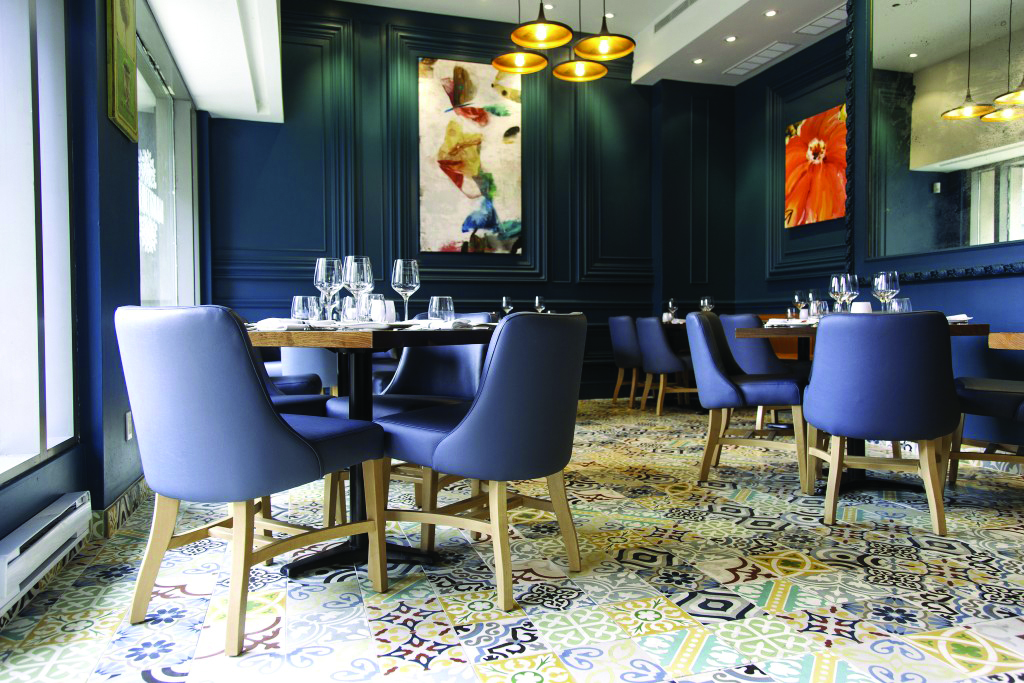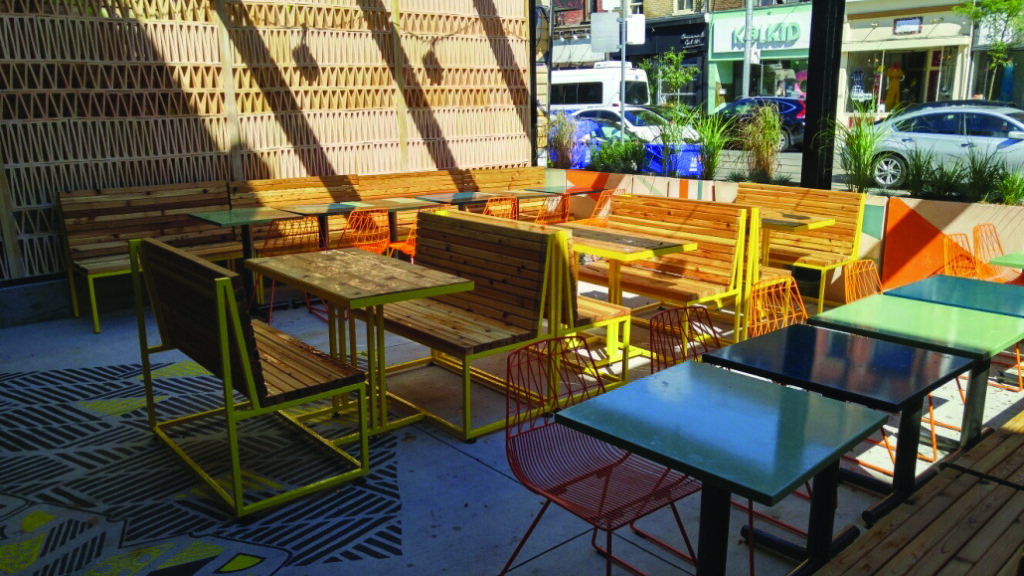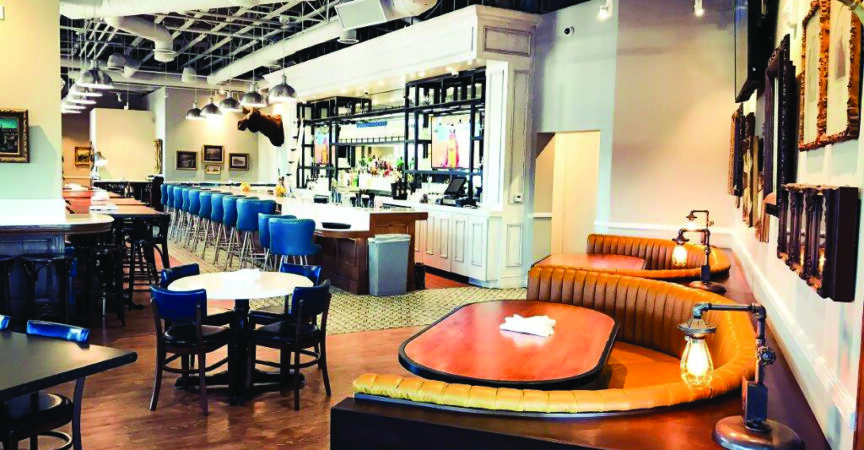Pull Up a Seat
The Inside Track on Furnishing a Restaurant That Works

With Eugene Honcharuk, Founder of Contract Supply Corp.
When it comes to furnishing a restaurant, it’s easy to focus on the visual impact—the colours, the shapes, the Instagrammable moments. But for Eugene Honcharuk, founder of Contract Supply and one of Canada’s most trusted voices in commercial furniture, that’s just the surface.
“People underestimate how critical furniture really is,” he says. “Before a guest tastes the food or talks to a server, they’ve already formed an opinion based on what they’re sitting on and what they see.” A great chair, he explains, doesn’t just look good—it feels solid, holds up to abuse, and contributes to the overall experience in ways most diners never consciously notice.
That mindset is becoming more common as operators move away from quick fixes and lean into long-term thinking. “We’re seeing it across the board—in upholstery and in hard materials,” Honcharuk says. “Velvets, leathers, plush fabrics—they’re everywhere now. Synthetics are nearly indestructible, and people are spending more because they know it pays off in the long run.” He notes the same shift in attitude when it comes to structural materials. “Whether it’s solid wood or steel, operators are starting to understand that durability matters. If it lasts twice as long, it’s not expensive—it’s smart.”
So, what should operators be thinking about when choosing furniture that doesn’t just look good—but works hard, holds up, and delivers real value over time? Here are four brutally honest, experience-backed pieces of advice from Honcharuk to help restaurateurs make smarter, more resilient choices.
1. Match your furniture to your service model.
Not all restaurants operate the same way—and their furniture shouldn’t either. That’s one of the first things Honcharuk wants operators to understand. “A high-turnover quick-service spot might run 60 to 70 turns a day. Fine dining? That’s a whole different seating experience,” he says. “You need to design for what’s really happening in your space. You don’t spec a three-legged chair for commercial use—it just doesn’t make sense.”
The wrong chair in the wrong setting isn’t just uncomfortable—it’s costly. “You wouldn’t believe how many people come to us after the fact, saying everything’s falling apart,” Honcharuk notes. “They had spec’d something pretty without thinking about the actual wear and tear.”
Contract Supply has seen it all over four decades of designing for everything from indie cafés to high-traffic entertainment venues. “We’ve got close to 3,000 chairs in Tomorrowland at the Cosmic Café in Disney,” Honcharuk says. “They’ve been there for over 20 years. We never expected them to last that long, but we built them to take the abuse.” When Universal Studios opened Jurassic Park, Honcharuk’s team was asked to recreate bamboo-looking chairs from a scene in the movie—but make them out of steel. “The ground actually shook as part of the experience,” he says. “So, we built something that looked delicate but could handle the chaos.”
The takeaway? Your furniture should match your actual operational demands. Whether it’s high-turnover seating, long dwell times, or immersive theming, durability and design need to work hand in hand.



2. Don’t chase price over value.
It’s one of the most common—and costly—mistakes Honcharuk sees in the industry: choosing furniture based on price, not performance. “Here’s a chair—it looks great, it’s $150. But it’s a retail chair, and it’s not made for commercial use,” he says. “That’s where a lot of people go wrong. They fall in love with the look and forget the context. Every chair in a restaurant might be sat in 50 or 60 times a day, every single day. It’s got to handle spills, constant wiping, and heavy usage. You can’t get around that. A chair built for a dining room at home just isn’t designed for that level of wear and tear.”
And it’s not just the budget buys that mislead. Even well-crafted materials can hide weak construction. “Just because it’s made out of wood doesn’t mean it’s commercial grade. I’ve seen beautiful chairs made with premium European beechwood, but they’re held together with dowels and friction—no glue, no reinforcements, no proper mortise and tenon joints. It wouldn’t cost them a dollar more to do it right, but they don’t.”
He sees the fallout regularly. “We’ll get the call a month later: the chairs are falling apart, the finish is flaking off, the welds are cracking. And now they’re spending more to replace them than they would have if they’d just invested properly up front.”
Honcharuk’s advice is blunt but honest: don’t confuse affordability with value. “A commercial chair isn’t just about materials—it’s about engineering. It’s about knowing this thing is going to hold 400 pounds, many times a day, for 10 to 15 years. That’s the kind of investment that actually saves you money.”
3. Collaborate with your supplier.
“Custom furniture doesn’t have to break the bank, but you do have to work closely with your supplier,” Honcharuk advises. Many custom projects start simply, often with a quick sketch or even a doodle on a napkin. “It’s true—we get napkin sketches from designers all the time,” he laughs. “But the key isn’t the sketch itself; it’s the conversations that happen afterward. You talk materials, you talk budgets, and you talk reality. That’s how great restaurant furniture actually gets made.”
He is quick to emphasize the importance of these conversations. “Good manufacturers will guide you to make the right choices, balancing the look you want with the durability and affordability you need. You shouldn’t compromise—you just have to collaborate smartly.”
Honcharuk has seen too many projects go sideways because the right conversations didn’t happen early enough. “Operators aren’t supposed to be furniture experts—that’s our job,” he says. “You should ask plenty of questions. Weld types, finishes, wood species, foam density—whatever it is, ask, because mistakes can get expensive when you don’t.”
These conversations often start with rough sketches, reference photos, or a big idea from a designer. “Sometimes it’s a Pinterest vision, sometimes it’s a napkin drawing,” he says. “Our job is to turn that into something real, functional and commercial grade.”
At the end of the day, he adds, it’s not just about filling a space. “We’re not just selling chairs—we’re building restaurants with you,” he explains. “If we’re not talking about layout, volume, mood, brand—we’re missing the point. You’re shaping how people feel when they walk into your restaurant. That takes more than just a supplier. It takes a collaborative partner.”
4. Recognize that timeless always beats trendy.
While he is well aware of design trends, Honcharuk is less interested in chasing them. “A lot of trends come and go,” he says bluntly. “The secret is sticking with timeless designs and materials that never go out of style.” For Honcharuk, that means clean lines, smart proportions, and materials with proven staying power. “Durability is timeless,” he adds. “You build something well and it’ll look good—and function—ten, even twenty years down the line.”
That said, some trends are evolving in the right direction. Upholstery, for example, is having a moment—not just in look but in performance. “We’re seeing more clients spec genuine leather and velvet,” Honcharuk notes. “They’re seen as luxury touches, but they’re also incredibly durable. Modern synthetics and finishes have come so far—they don’t fade, they don’t wear out, they’re easy to clean. People are finally understanding that investing in quality materials pays off.”
One of the smartest moves an operator can make, Honcharuk says, is to lean into what already works, like refurbished commercial furniture. “Often, years after a purchase, our clients will call and ask if we want our chairs back—they love the product and don’t want to see it go to waste. We probably have four to five thousand used chairs in the shop at any given time.”
The appeal of refurbished furniture is growing, not just for budget reasons but because it supports sustainability goals, and Honcharuk sees real opportunity for forward-thinking operators. “Refurbishing gets overlooked, but it shouldn’t,” he says. “You can save a lot, and in many cases, the quality is better than new imports. Older pieces were built with better materials and stronger craftsmanship, and we’ve got warehouses full of furniture ready for a second life. Once operators see the results, they get it—it’s like getting brand new furniture for half the price, without sacrificing performance or aesthetics.”

About Contract Supply Corp.
Founded in 1985 by Eugene Honcharuk, Contract Supply Corp. has grown into one of North America’s most trusted manufacturers of commercial-grade furniture for the restaurant and hospitality industries. Built on a foundation of craftsmanship, durability, and responsive service, the company is known for delivering high-performance furniture that’s as functional as it is timeless.
All of Contract Supply’s custom and customizable products are proudly made in Canada at their state-of-the-art manufacturing facilities in Mississauga and London, Ontario.
A long-standing partner of Restaurants Canada, Contract Supply provides hard and soft seating and tables for the RC Pop-Up Experience and Chef’s Table Stage at RC Show—bringing industry insight and reliable performance to every detail.
Learn more and get in touch at: contractsupply.ca









